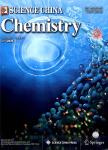Photoredox catalytic alkylarylation of alkynes with arylsulfonylacetate as bifunctional reagent
作者机构:School of ChemistryEngineering Research Center of Energy Storage Materials and DevicesMinistry of EducationXi’an Key Laboratory of Sustainable Energy Material ChemistryXi’an Jiaotong UniversityXi’an710049China
出 版 物:《Science China Chemistry》 (中国科学(化学英文版))
年 卷 期:2024年第67卷第6期
页 面:2022-2028页
核心收录:
学科分类:081704[工学-应用化学] 07[理学] 08[工学] 0817[工学-化学工程与技术] 070303[理学-有机化学] 0703[理学-化学]
基 金:supported by the National Natural Science Foundation of China(21901199) Xi’an Jiaotong University(7121192002)
主 题:bifunctional reagent photoredox catalysis Smiles rearrangement alkylarylation tetrasubstituted acyclic all-carbon olefins
摘 要:Difunctionalization of alkynes represents a powerful and straightforward approach to the synthesis of complex ***,the radical difunctionalization of alkynes mediated by bifunctional reagents remains challenging and underexplored,despite significant progress having been made in alkene ***,we report a novel arylsulfonylacetate skeleton in which aryl rings are attached to acetates through SO_(2),serving as a powerful bifunctional reagent for the alkylarylation of alkynes via vinyl-radical intermediate under photoredox *** modular bifunctional reagent enables the simultaneous incorporation of a wide range of functional groups,including(hetero)aryl ring and alkyl carboxylate into alkynes,resulting in synthetically valuable all-carbon tetrasubstituted alkene *** transformation is distinguished by its redox-neutral nature,readily accessible starting materials,compatibility with diverse functional groups and its capacity to facilitate convergent *** utility of this approach was further demonstrated by the late-stage functionalization of complex molecules and the preparation of fluorescent molecules and anti-cancer drugs.



